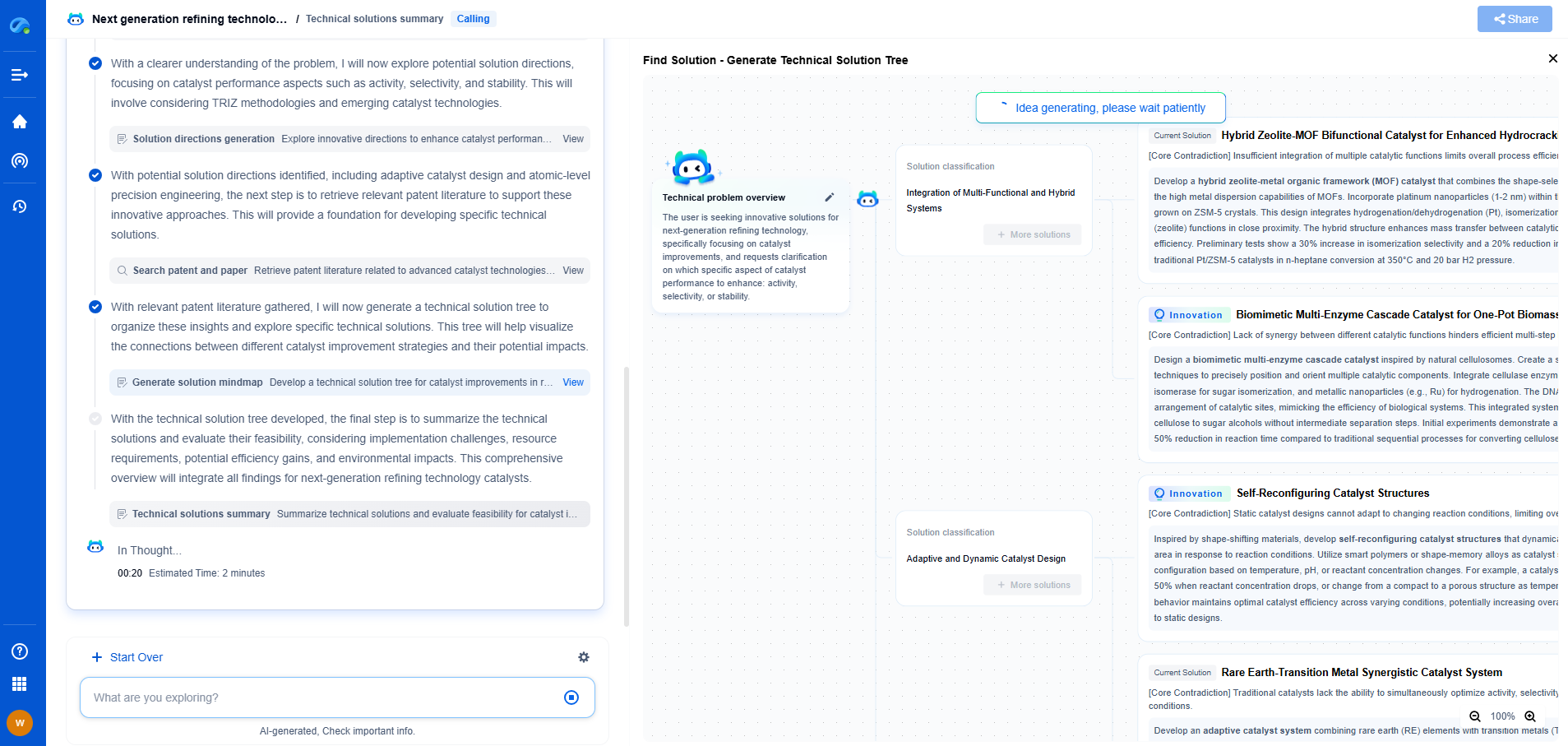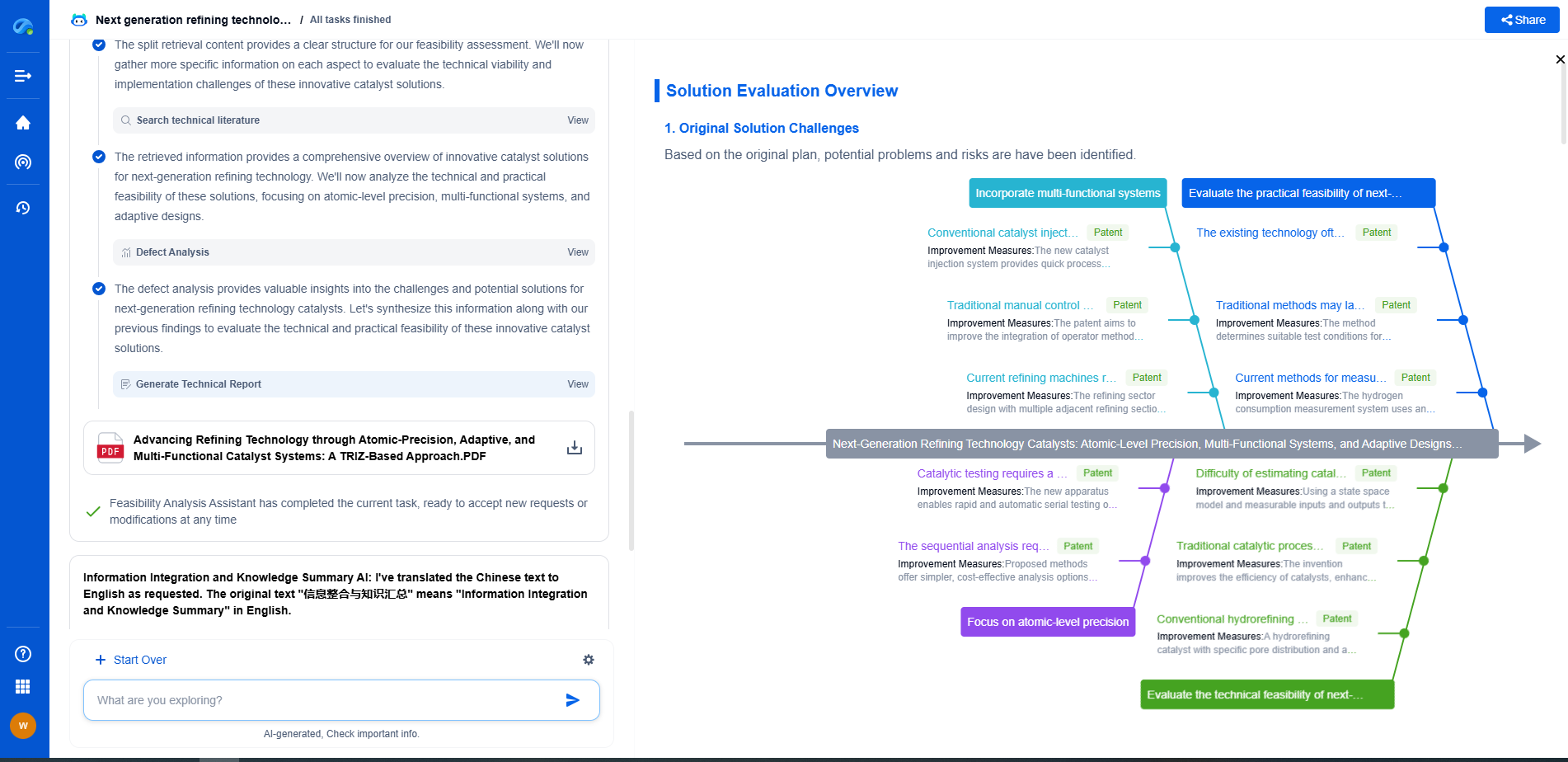Parallel Processing: How Dual-Arm Robots Cut Cycle Time in Half
JUN 26, 2025 |
In the fast-paced world of manufacturing and automation, efficiency is king. Companies continuously seek ways to streamline processes, reduce costs, and enhance productivity. One cutting-edge solution that has emerged in recent years is the use of dual-arm robots. These sophisticated machines are designed to mimic the adaptability and dexterity of human arms, offering a significant leap forward in automation technology. By enabling parallel processing, dual-arm robots can dramatically cut cycle time, thus boosting operational efficiency.
Understanding Parallel Processing in Robotics
Parallel processing refers to the method in which two or more tasks are performed simultaneously. In the realm of robotics, this means that a robot can perform multiple operations at once, rather than sequentially. Dual-arm robots are particularly adept at this, as each arm can independently perform tasks or collaborate to complete a single task more efficiently. This capability is akin to the way humans use both hands to perform tasks more quickly and effectively, such as assembling a piece of furniture or preparing a meal.
Benefits of Dual-Arm Robots in Reducing Cycle Time
1. Increased Task Flexibility
Dual-arm robots are engineered to handle a variety of tasks that traditional single-arm robots may struggle with. Their dexterity allows them to perform complex assembly operations, pick-and-place tasks, and quality inspections without the need for constant reprogramming or retooling. This flexibility not only reduces cycle time but also allows manufacturers to switch between tasks swiftly, thus enhancing overall productivity.
2. Simultaneous Task Execution
One of the most significant advantages of dual-arm robots is their ability to execute tasks simultaneously. For instance, one arm can hold a component while the other performs an operation on it, such as welding or fastening. This capability reduces the time it takes to complete an assembly or manufacturing process, as there is no need to wait for one task to finish before starting another.
3. Improved Precision and Consistency
Dual-arm robots are designed with advanced sensors and algorithms that ensure high precision and consistency in task execution. By maintaining uniformity in repetitive tasks, they reduce the likelihood of errors and rework, further minimizing cycle time. This precision is crucial in industries where even minor deviations can lead to significant quality issues and increased costs.
4. Enhanced Human-Robot Collaboration
Dual-arm robots are often used in collaborative settings, where they work alongside human operators. This collaboration allows for the optimization of both human and robotic strengths, leading to more efficient workflows. By handling repetitive and physically demanding tasks, robots free up human workers to focus on more complex decision-making tasks, thus improving overall productivity and reducing cycle time.
Case Studies: Real-World Applications
To understand the practical impact of dual-arm robots, consider their application in the automotive industry. In assembly lines, dual-arm robots perform tasks like installing dashboards, which require a high degree of precision and coordination. By using both arms to handle different components simultaneously, these robots significantly reduce the time required for assembly.
Similarly, in the electronics industry, dual-arm robots excel at assembling small, delicate components such as circuit boards. Their ability to perform intricate tasks with both arms concurrently results in faster production times and less downtime.
Conclusion: The Future of Dual-Arm Robotics
The integration of dual-arm robots in manufacturing and other sectors represents a significant advancement in automation technology. By enabling parallel processing, these robots cut cycle times dramatically, offering a competitive edge to businesses willing to invest in them. As technology continues to evolve, we can expect further enhancements in dual-arm robot capabilities, opening new possibilities for efficiency and innovation in various industries. Embracing this technology is not just about keeping pace with competitors; it's about setting the standard for future manufacturing excellence.
Ready to Redefine Your Robotics R&D Workflow?
Whether you're designing next-generation robotic arms, optimizing manipulator kinematics, or mining patent data for innovation insights, Patsnap Eureka, our cutting-edge AI assistant, is built for R&D and IP professionals in high-tech industries, is built to accelerate every step of your journey.
No more getting buried in thousands of documents or wasting time on repetitive technical analysis. Our AI Agent helps R&D and IP teams in high-tech enterprises save hundreds of hours, reduce risk of oversight, and move from concept to prototype faster than ever before.
👉 Experience how AI can revolutionize your robotics innovation cycle. Explore Patsnap Eureka today and see the difference.
- R&D
- Intellectual Property
- Life Sciences
- Materials
- Tech Scout
- Unparalleled Data Quality
- Higher Quality Content
- 60% Fewer Hallucinations
Browse by: Latest US Patents, China's latest patents, Technical Efficacy Thesaurus, Application Domain, Technology Topic, Popular Technical Reports.
© 2025 PatSnap. All rights reserved.Legal|Privacy policy|Modern Slavery Act Transparency Statement|Sitemap|About US| Contact US: help@patsnap.com

